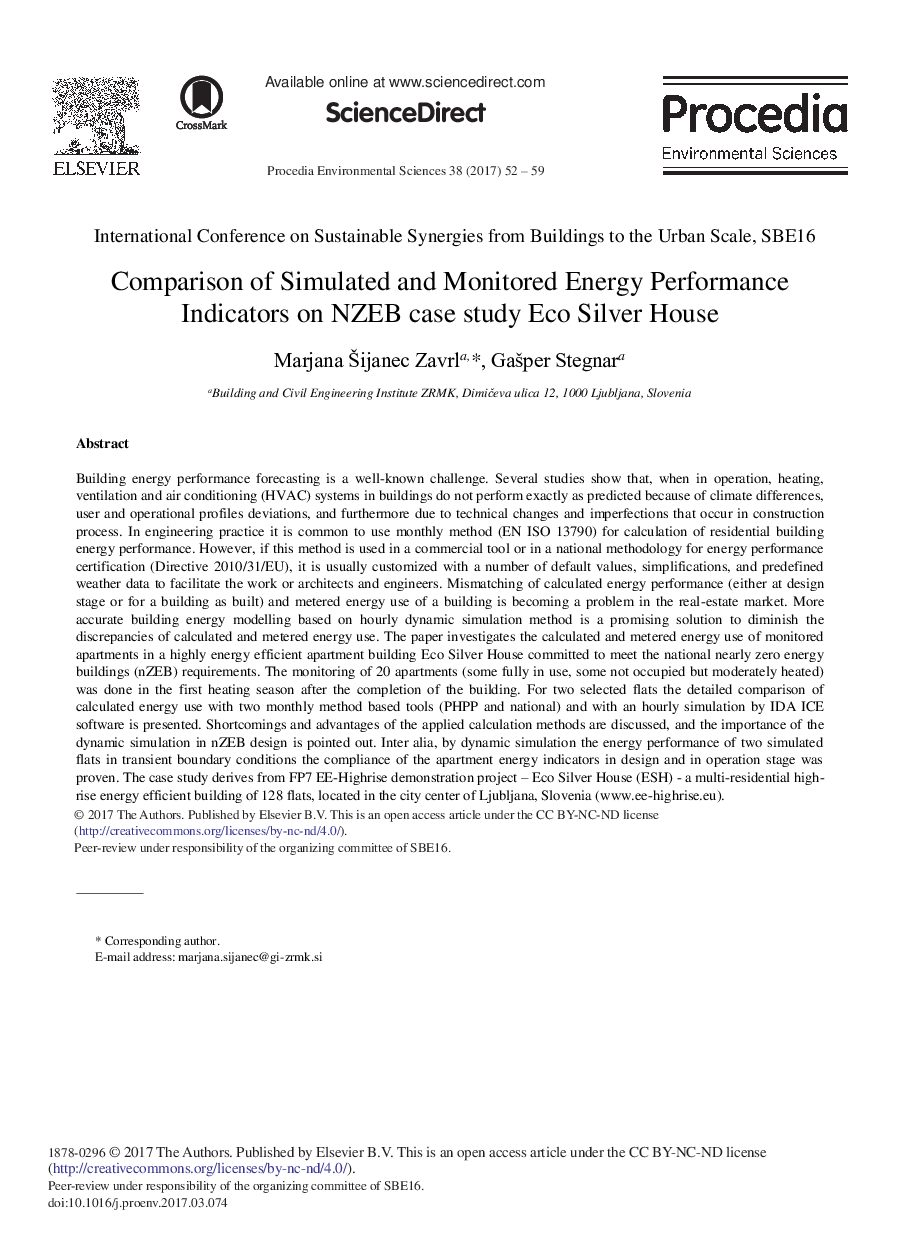| کد مقاله | کد نشریه | سال انتشار | مقاله انگلیسی | نسخه تمام متن |
|---|---|---|---|---|
| 5745012 | 1618606 | 2017 | 8 صفحه PDF | دانلود رایگان |

Building energy performance forecasting is a well-known challenge. Several studies show that, when in operation, heating, ventilation and air conditioning (HVAC) systems in buildings do not perform exactly as predicted because of climate differences, user and operational profiles deviations, and furthermore due to technical changes and imperfections that occur in construction process. In engineering practice it is common to use monthly method (EN ISO 13790) for calculation of residential building energy performance. However, if this method is used in a commercial tool or in a national methodology for energy performance certification (Directive 2010/31/EU), it is usually customized with a number of default values, simplifications, and predefined weather data to facilitate the work or architects and engineers. Mismatching of calculated energy performance (either at design stage or for a building as built) and metered energy use of a building is becoming a problem in the real-estate market. More accurate building energy modelling based on hourly dynamic simulation method is a promising solution to diminish the discrepancies of calculated and metered energy use. The paper investigates the calculated and metered energy use of monitored apartments in a highly energy efficient apartment building Eco Silver House committed to meet the national nearly zero energy buildings (nZEB) requirements. The monitoring of 20 apartments (some fully in use, some not occupied but moderately heated) was done in the first heating season after the completion of the building. For two selected flats the detailed comparison of calculated energy use with two monthly method based tools (PHPP and national) and with an hourly simulation by IDA ICE software is presented. Shortcomings and advantages of the applied calculation methods are discussed, and the importance of the dynamic simulation in nZEB design is pointed out. Inter alia, by dynamic simulation the energy performance of two simulated flats in transient boundary conditions the compliance of the apartment energy indicators in design and in operation stage was proven. The case study derives from FP7 EE-Highrise demonstration project - Eco Silver House (ESH) - a multi-residential high-rise energy efficient building of 128 flats, located in the city center of Ljubljana, Slovenia (www.ee-highrise.eu).
Journal: Procedia Environmental Sciences - Volume 38, 2017, Pages 52-59